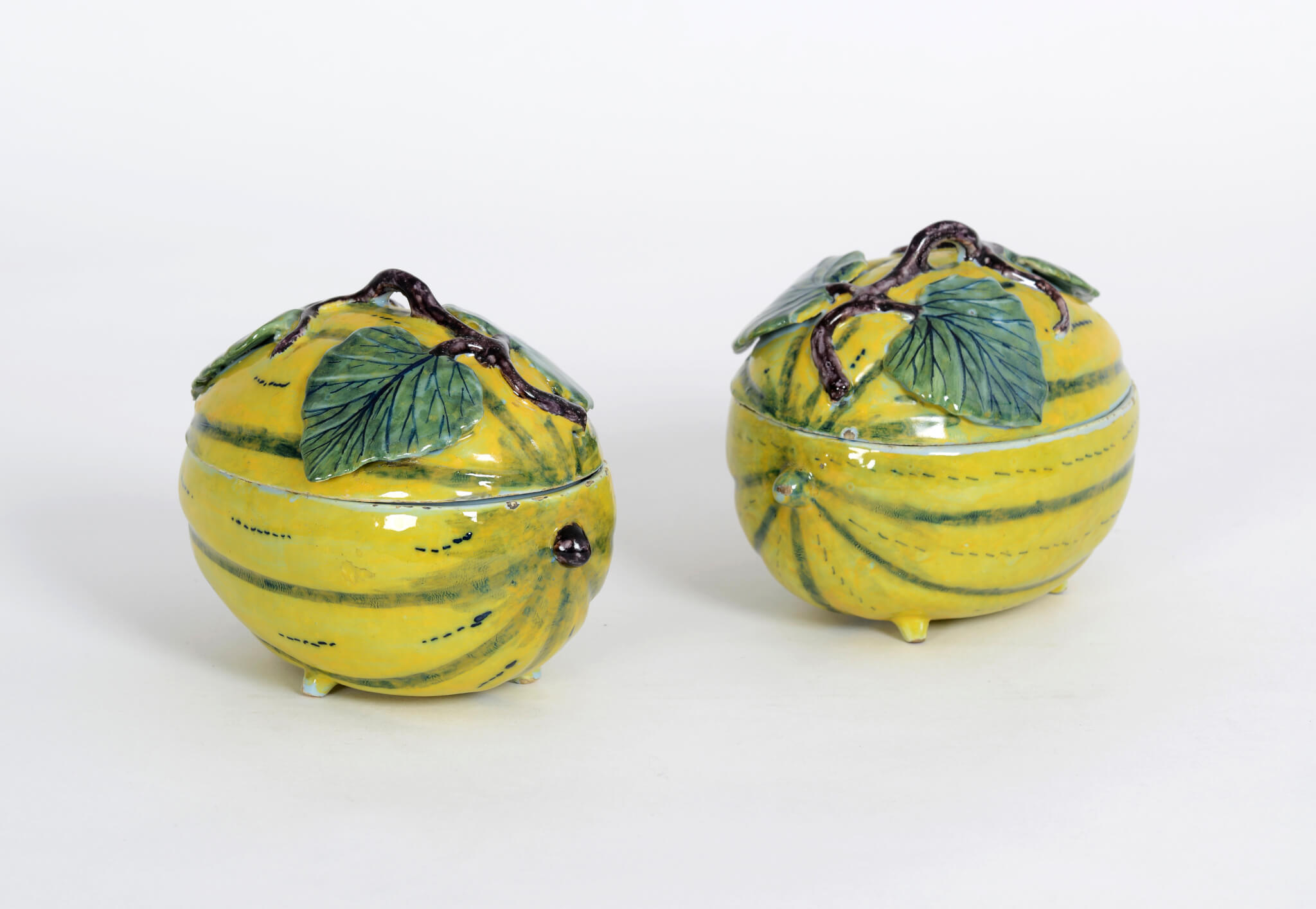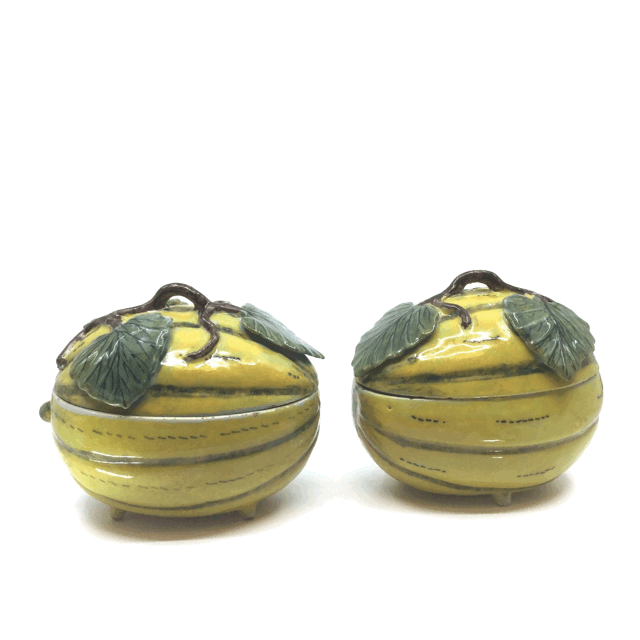
[popup_trigger id=”13756″ tag=”span”]![]() [/popup_trigger]
[/popup_trigger]
Images on this website are licensed under a
Creative Commons Attribution-NoDerivs 3.0 Unported License.

OBJECT
•D1950. Pair of Polychrome Melon Tureens and Covers
Delft, circa 1765
Each naturalistically modeled as a yellow lobed oval fruit heightened and shaded on the ends in green, and raised on three short peg feet, the covers applied with a manganese stem-form handle issuing three blue-veined green leaves.
Heights: 8.7 and 8.9 cm. (3.4 and 3.5 in.); Lengths: 10.9 and 11.2 cm. (4.3 and 4.4 in.)
Provenance: The Frits Phillips Collection, ‘De Wielewaal’, Eindhoven; Aronson Antiquairs, Amsterdam, 2008; Dutch Private Collection
Note: Melons were a greatly fancied fruit during the Baroque period, appearing frequently in seventeenth-century Dutch still life paintings. They also were savored as edible delicacies, appreciated not only for their intense aroma and supple flesh, but also for the medicinal properties attributed to them as a cure for fevers and an antidote for inflammations of the kidney, bladder and liver. Served as a dessert, the fruit was chopped into pieces and seasoned with sugar or salt and pepper. A special delicacy was a tart of melon-pieces covered in a pastry-crust and baked in butter. When presented in a matching faience tureen, such as these melon tureens, intended mainly for the dessert course at the end of a dinner, when fruits, creams and various pastries were served, the culinary pleasure could only have been enhanced by the visual delight of the ‘trompe l’oeil’ ceramic pun (see G.-D. Helke, Deckelterrinen des 18. Jahrhunderts, Munich 2007, p. 105).
Similar examples: A pair of comparable melon tureens but with leaf-shaped stands in the Museum Boijmans van Beuningen, Rotterdam, marked for Hendrik van Hoorn, the owner of De Drie Posteleyne Astonne (The Three Porcelain Ash-Barrels) factory from 1759 to 1804, is illustrated in Lunsingh Scheurleer 1984, p. 196, no. 47; and in Mees 1997, p. 168 (top). Other similar pairs are illustrated in Aronson 2009, pp. 86-87, no. 54, in Aronson 2013, p. 119, no. 66 and in Aronson 2016, pp. 66-67, no. 27.
AVAILABILITY
Sold








